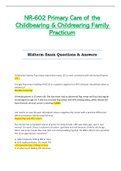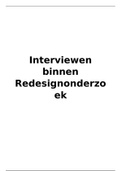Exam (elaborations)
Test Bank for Maternal Child Nursing, 5th Edition, Emily Slone McKinney, Susan R. James, Sharon Smith Murray, Kristine Nelson, Jean Ashwill
Test Bank for Maternal Child Nursing, 5th Edition, Emily Slone McKinney, Susan R. James, Sharon Smith Murray, Kristine Nelson, Jean Ashwill Test Bank for Maternal Child Nursing, 5th Edition, Emily Slone McKinney, Susan R. James, Sharon Smith Murray, Kristine Nelson, Jean Ashwill
[Show more]












